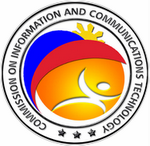If learning should be effective, the school needs to keep up with the times and not only of the learners’ needs, but on what makes them learn more effectively.
E-Learning is the way to the future of educated young minds, young minds who will be the ones to remain and see how the future would be. But what is e-learning? When did the words or letters such as internet, e-mail, website, hypertext, http, html, http://www.com/, IT, mean anything to us? A 14-year old boy once told her grandmother that they don’t write letters anymore but they e-mail, to the dismay of the grandmother who shook her head and said: I am truly lost, I don’t know about a lot of things anymore nowadays.

E-Learning or short for electronic learning is a coined term that refers to learning using electronic or digital devices such as the computer and its software, and being on-line, or connected with the internet. E-Learning maximizes the use of information technology (IT) and opens the door for unlimited access to information, and for the purposes of the school, educational information that will enliven the minds of the young to the limitless world of learning, and eventually, the way to a future where those who know how to use the technology survives and thrives.
But one needs to have the resources to be able to get the things needed to be able to get hold of e-learning. And these things cost much, especially for students whose family is trying to make both ends meet while sending their children to school.
Reminiscent of the days when books from the Western World were only available to the Ilustrados, technology too seems to put a gap between those who can afford computers, software and other hi-tech gizmos that make information easily accessible, thus making learning fast. Just try using Encarta, the “soft” version of the hardbound encyclopedia and one can’t help but be amazed of how extensive, colorful, engaging and fast learning is about any topic under the sun.
And this gap between “haves” and “have nots” in accessing digital technology for learning, or what we call the “digital divide” is what the Commission on Information and Communications Technology (CICT) sought to bridge when it conceived the iSchool Project. Being the flagship project of the CICT, the iSchool Project establishes High School Community eCenter in various public schools all over the country. The project aims to provide computer access and internet connectivity to all public high schools throughout the country by 2010 in order to bridge the digital divide.
Through this project, the CICT being the sponsor, provides a funding for the information technology (IT) facilities that include:
- 21 computers bundled with an Operating System
- Office Productivity Tool software
- network equipment
- network installations
- unlimited broadband Internet access for the first (12) months of operations
- educators’ training on Laboratory Management
- Teacher’s Training
- CeC Operations Training and Sustainability Training.
And the Western Visayas College of Science and Technology (WVCST) has reason to celebrate and be proud because its Laboratory School was chosen by the CICT as the center of the iSchool Project in the Visayas. Through the efforts of Engr. Gambol, the WVCST Lab School will function as the High School Community eCenter (HS CeC) for 13 public high schools in the Visayas:
- four in Negros Island (Bayawan City, Dumaguete City and San Carlos City)
- three in Guimaras (Jordan, San Lorenzo, and Nueva Valencia)
- six in Iloilo (Kirayan NHS in Miagao, Igbaras NHS, Leon NHS, Alimodian NCHS, Melchor Nava NHS in Calaparan and Iloilo NHS).
When we come to think of it, today’s young have a language of their own, a language sometimes only they understand. Educators should learn the learner’s language so to speak, to get across the message, to help them learn what they need to learn. And surely, the CICT iSchool Project will make a difference in the lives of learners by its concrete effort of helping them gain equal access to e-learning technology that most of the time are only enjoyed by those who can afford them.
Learning the complexity or simplicity of numbers, the mysteries of Science, the diversity of language and the endless critical analysis of political, social and historical events will definitely never be the same again when one learns using computers…..and this difference will definitely impact the learning potentials of able but economically disadvantaged high school students in the Visayas through the CICT iSchool Project…found at the heart of the region….right here in WVCST Laboratory School.

.gif)

